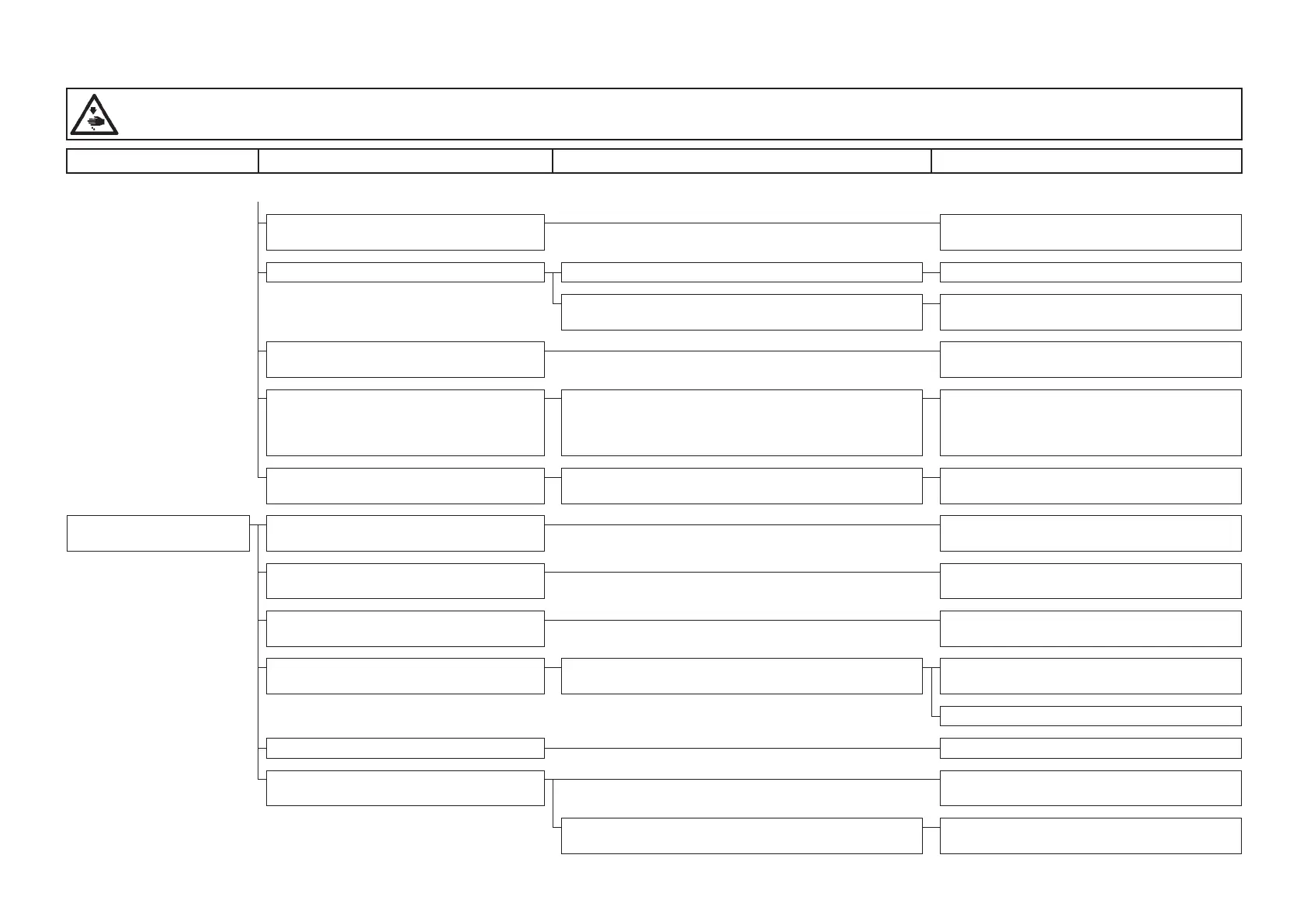– 132 –
WARNING :
Turn OFF the power before starting the work so as to prevent accidents caused by abrupt start of the sewing machine.
Trouble Cause (1) Cause (2) Check and corrective measures
From the previous page
2-5) Needle comes in contact with the wip-
er.
Adjust the wiper position.
2-6) Needle is bent. 6-A) The needle thread tension is too high. Adjust the tension to a proper level.
6-B) The work clamp foot treads on the needle thread at
the beginning of sewing and the wiper is caught.
Increase the crosswise clearance between the
wiper and the needle. (23 to 25 mm)
2-7) Needle is too thin. Change the needle No. to the suitable one to
the material.
2-8) Needle comes in contact with the
moving knife for shorter thread re-
maining thread trimmer. (LK-1900BB/
BNB, 1903BB/BNB)
8-A) Sensor position is inappropriate. Check the initial position of moving knife, and
adjust the initial position of sensor.
2-9)
Needle comes in contact with the suction
nozzle. (LK-1900BB/BNB, 1903BB/BNB)
9-A) Sensor position is inappropriate. Check the initial position of suction nozzle, and
adjust the initial position of sensor.
3. Stitch Skipping 3-1) Too much clearance between the nee-
dle and the inner hook
Adjust the clearance between needle and inner
hook.
3-2) Inadequate timing adjustment for the
needle and the inner hook
Adjust timing for the needle and the inner hook.
3-3) Inadequate clearance between the
shuttle driver and the needle
Adjust the clearance between needle and shut-
tle driver.
3-4) Material to be sewn is not properly
stretched.
4-A) Too much clearance between the work clamp foot
and sewing object
Adjust the work clamp foot height.
Remove the slackness of the sewing object.
3-5) Needle is bent or blunt. Replace the needle.
3-6) Loop of the needle thread falls down. Attach the needle with the long groove orienting
slightly to the right. (Approximately 20°)
6-A) Feed timing is too fast. Change the feed timing by the use of the mem-
ory switch.

